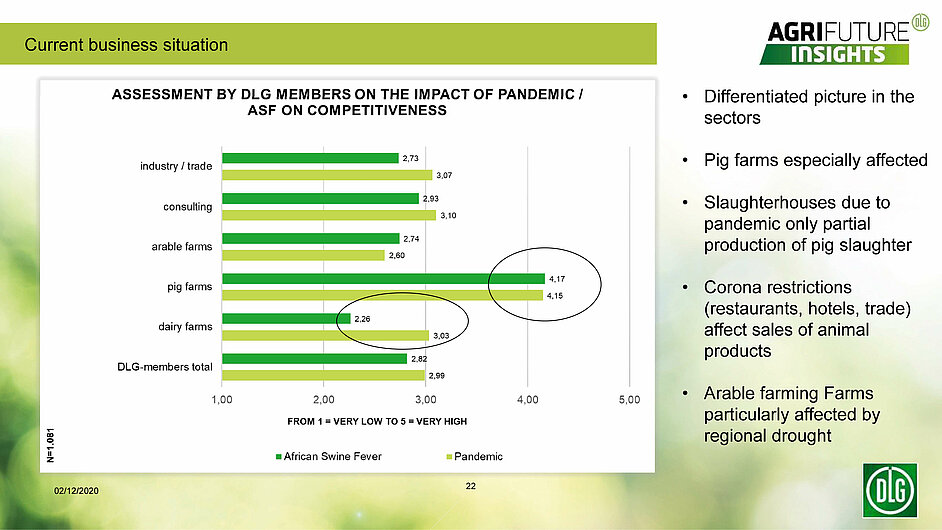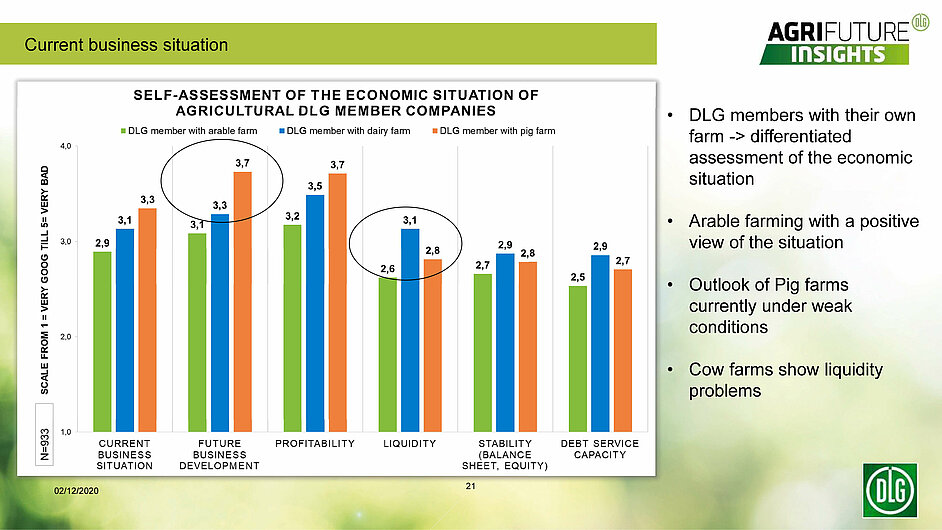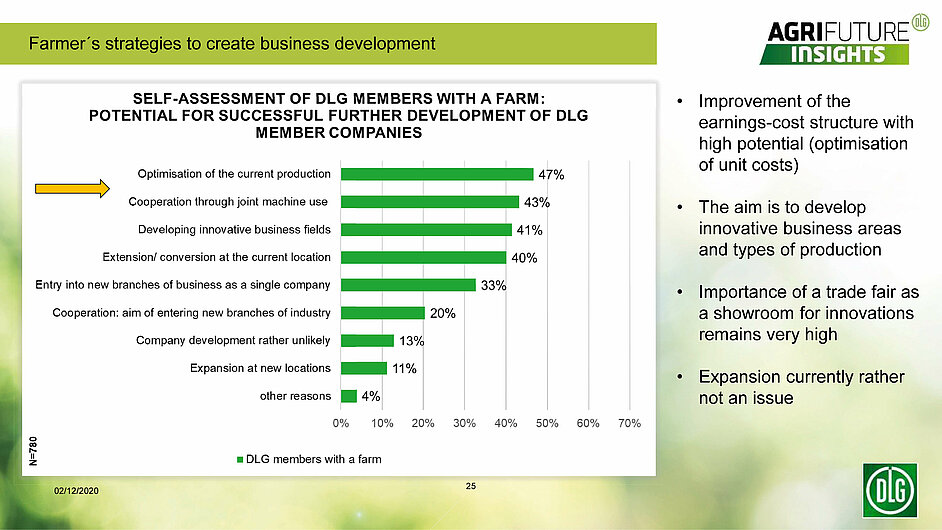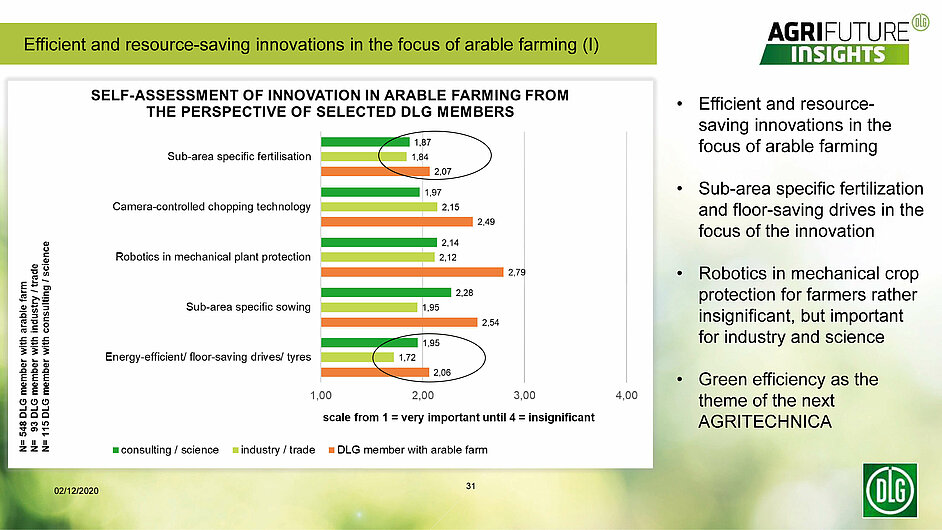Understanding Global Farming
Agriculture is facing great challenges and is in a constant state of change. The focus is on the agricultural entrepreneurs and representatives of the sector, who take on the issues of the future in order to develop and implement targeted solutions. To this end, we as the DLG want to support all players in the sector and assist them with competence center, trade fairs and testing. However, requirements and challenges are sometimes very short-lived and must be put to the test again and again in order to always keep an eye on the latest challenges.
The evaluation of the annual Agrifuture Insights studies by the DLG helps us to do this. The aim of the study is to get an up-to-date picture of the mood regarding farm developments, innovation trends and external influencing factors in order to adjust the focus in our daily work and to identify adjustments in the programme for the coming months.
The Agrifuture Insights studies have already gained a wide range of insights. In the last year 2020, DLG members were exclusively surveyed in the study (2,002 participants). The results with regard to the factors influencing the pandemic and African swine fever in Europe were particularly exciting (compare graphic 1). A clear impairment of the pig market could be determined here, whereby arable farming had relatively little influence
In order to understand the reasons for these influencing factors, an economic evaluation of the farms was carried out. The self-assessment of the economic condition in the respective farm segments (compare graphic 2) made it clear that the profitability and future business development of the pig farming segment in particular were assessed as rather weak. Liquidity, on the other hand, was still sufficient in 2020 due to good marketing, which is likely to have deteriorated in 2021.
If we look not only at the economic situation but also at the potential of the farms, where starting points for successful further development can be found, the absolute focus of the farms is still on optimising their own production. However, it was interesting to note that, in addition to the establishment of innovative farm segments, cooperation among farmers can also be a way to further development (compare graphic 3). We were finally able to use this insight in the committee's competence work and are currently working on a paper in the field of economics on the various forms of cooperation in agriculture.
In addition to the insights for the competence center, it is essential for the DLG to understand which technical and constructional trends are consolidating in agriculture and where the future-oriented innovations can be found. This is particularly important in the technical support of events and trade fairs. The aim is to be at the cutting edge of topics and to always be a competent discussion partner for the players in the entire agricultural sector.
The trends in crop production, dairy farming and pig farming are of particular interest to all areas of the DLG. In arable farming, important trends in sub-area-specific fertilisation and efficient tyres can be identified (compare graphic 4). What is interesting in the analyses is that some of the answers in the groups of practical agriculture, consulting/science and industry differ from each other.
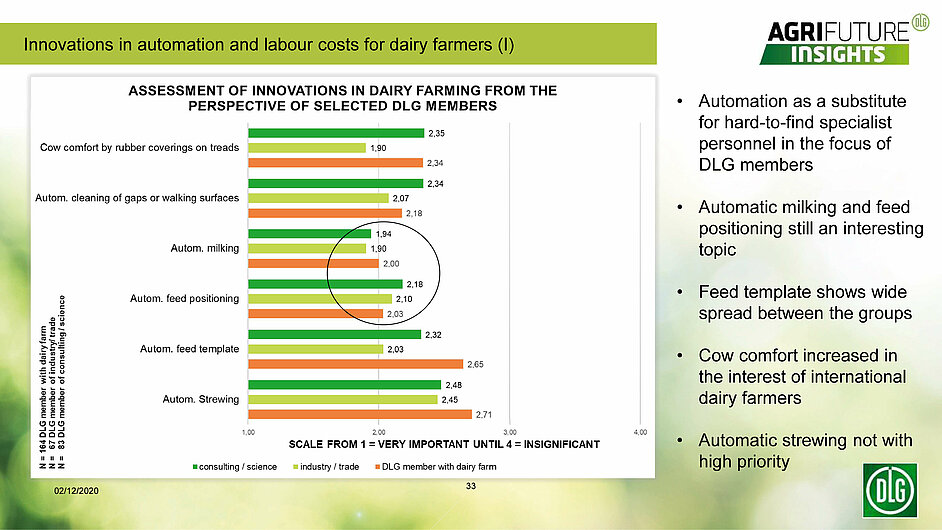
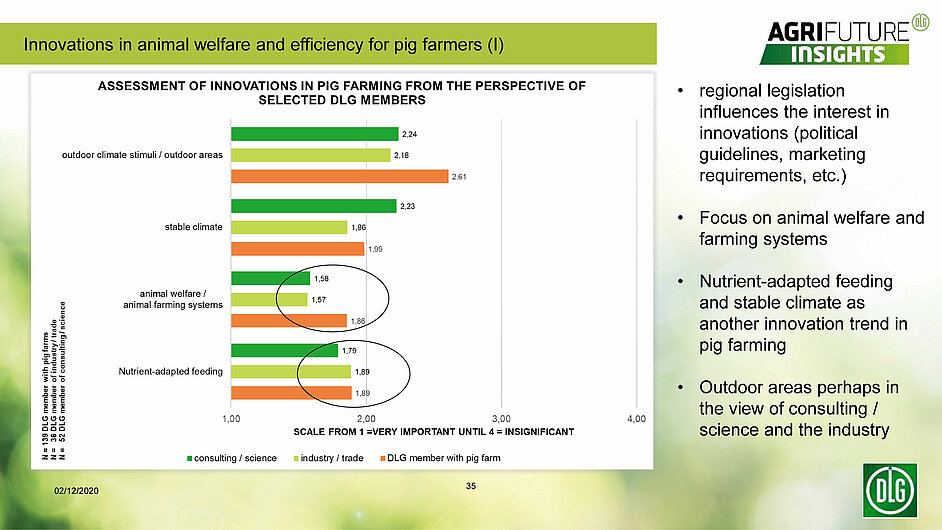
In dairy farming, trends in automation were listed with high importance. Automatic milking systems and automatic feed presentation systems are in the focus of DLG members as innovations in the area of work completion (compare graphic 5). When looking at international regions, other moods could build up here.
In pig farming, the focus of the market participants is on the husbandry systems (compare graphic 6). Particularly the topics of animal welfare and nutrient-adapted feeding are attributed a high degree of importance. A separate survey of international markets in comparison to each other could well result in different constellations in the future.
From these and other results of Agrifuture Insights, we want to gain our insights for the further professional work of the DLG. We are already planning to launch a new study for the year 2021 in September in order to be able to compare the results of previous years with current trends and assessments. We would like to invite you to participate in the study so that you, as a DLG member, can also benefit from the results of the survey. Knowledge transfer is a great advantage of our network and will remain so. Only in this way can we identify developments in the agricultural sector in good time and thus respond to current challenges. I look forward to the results of the 2021 survey and am confident that together we will find solutions in the network and master the challenges of the future.


